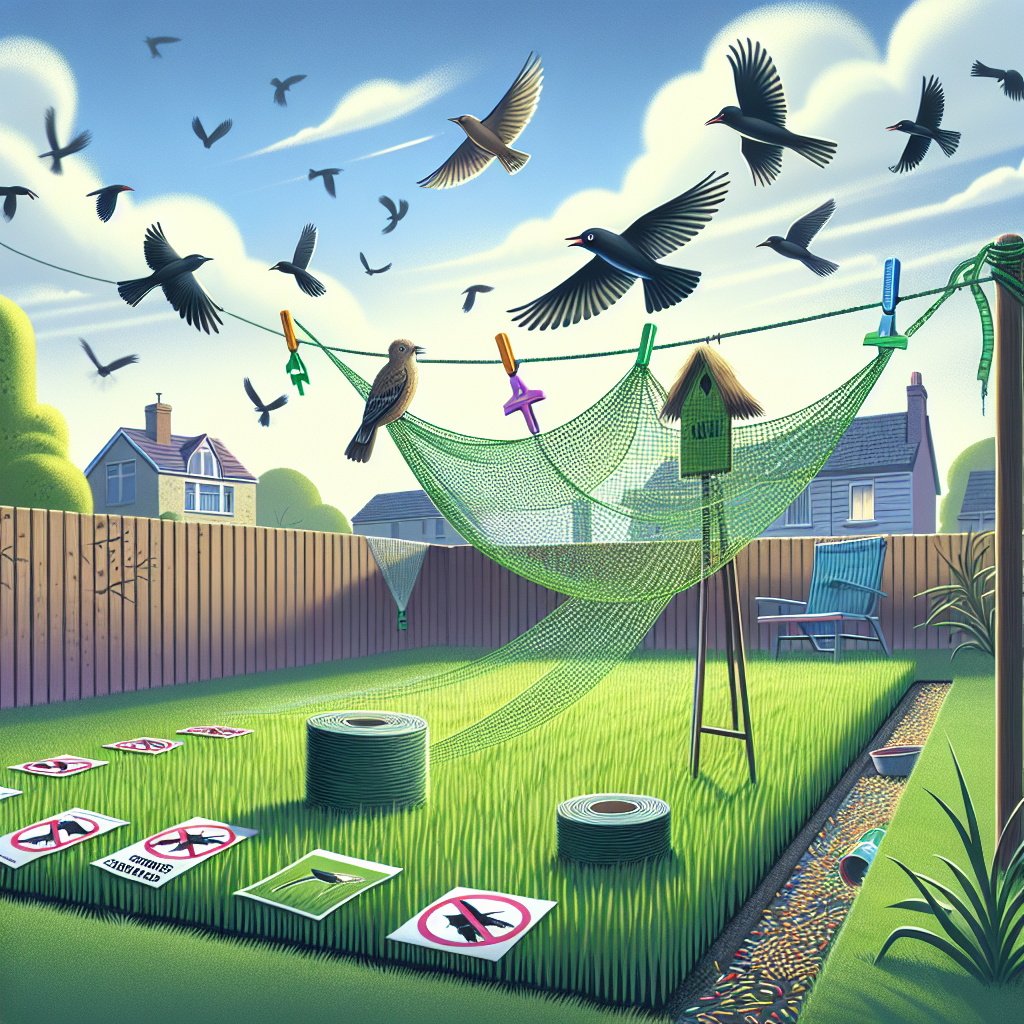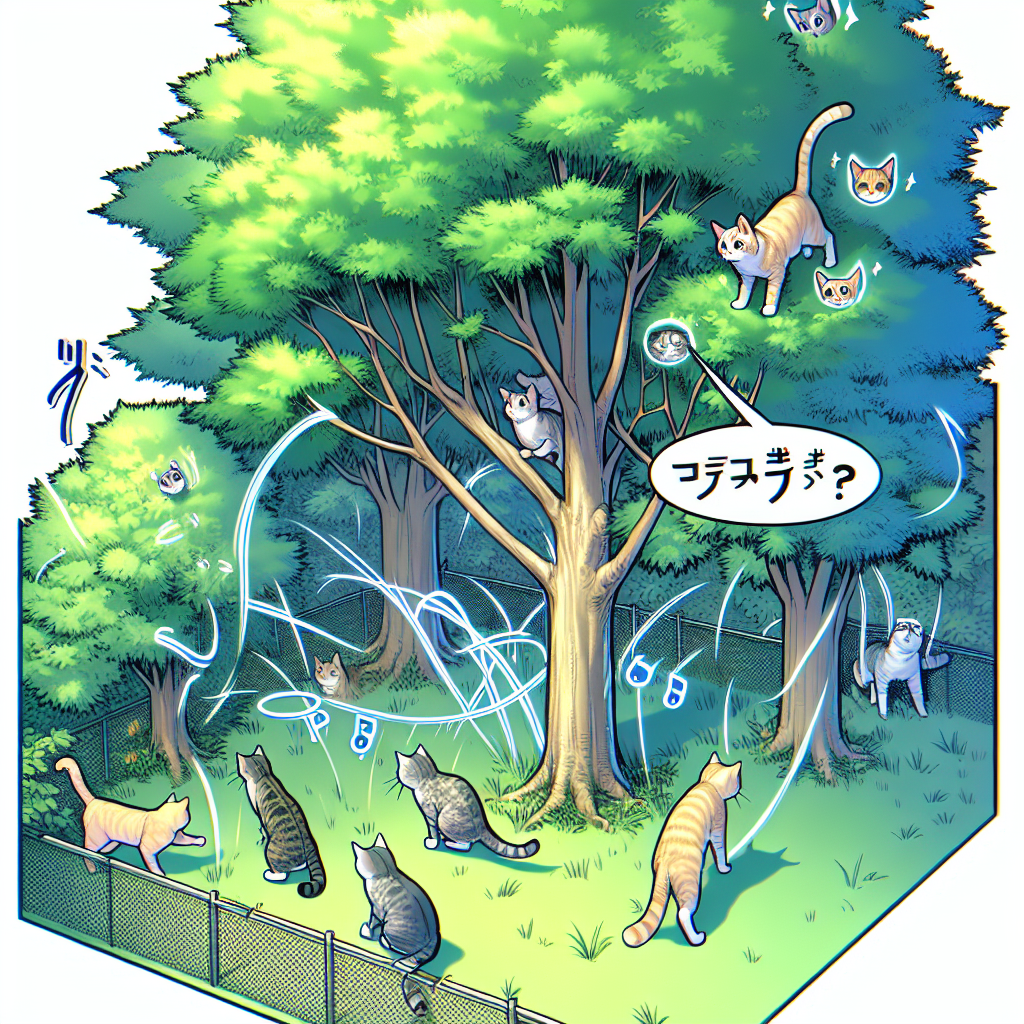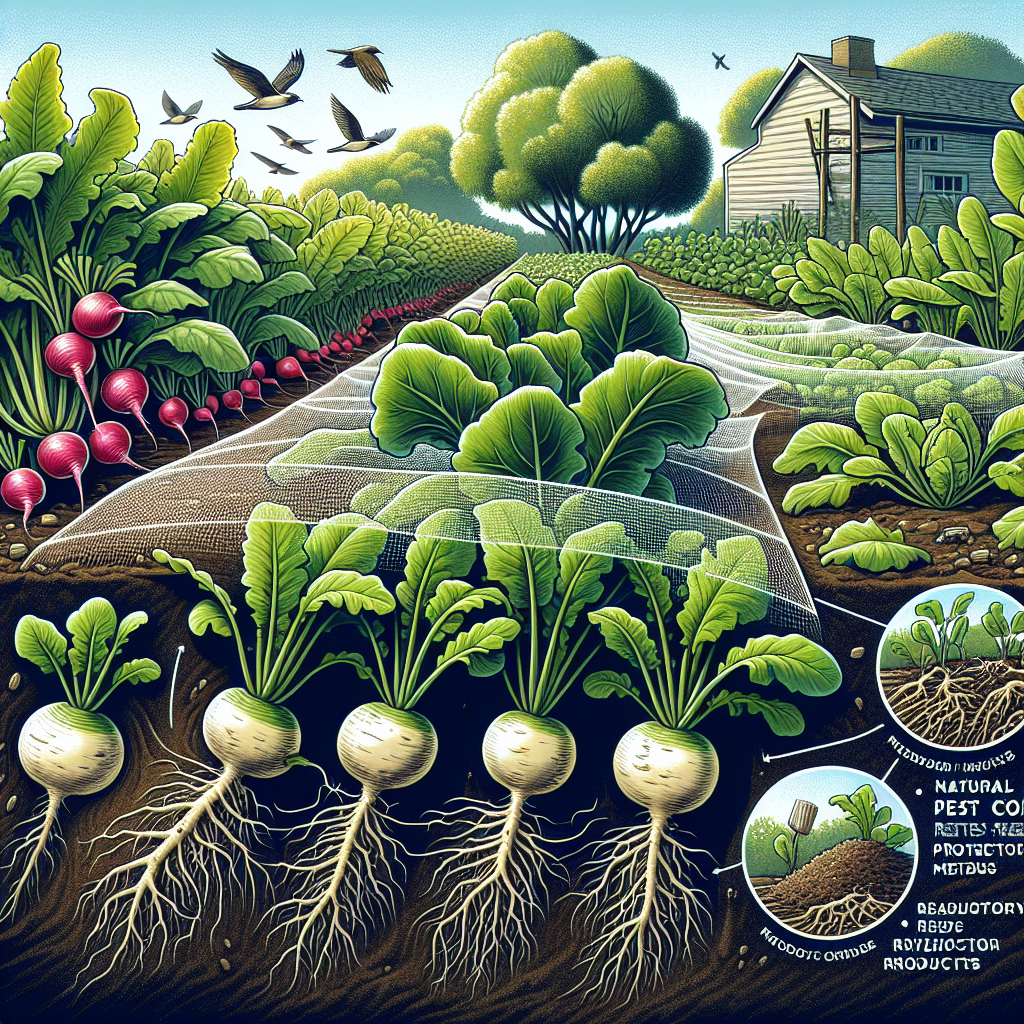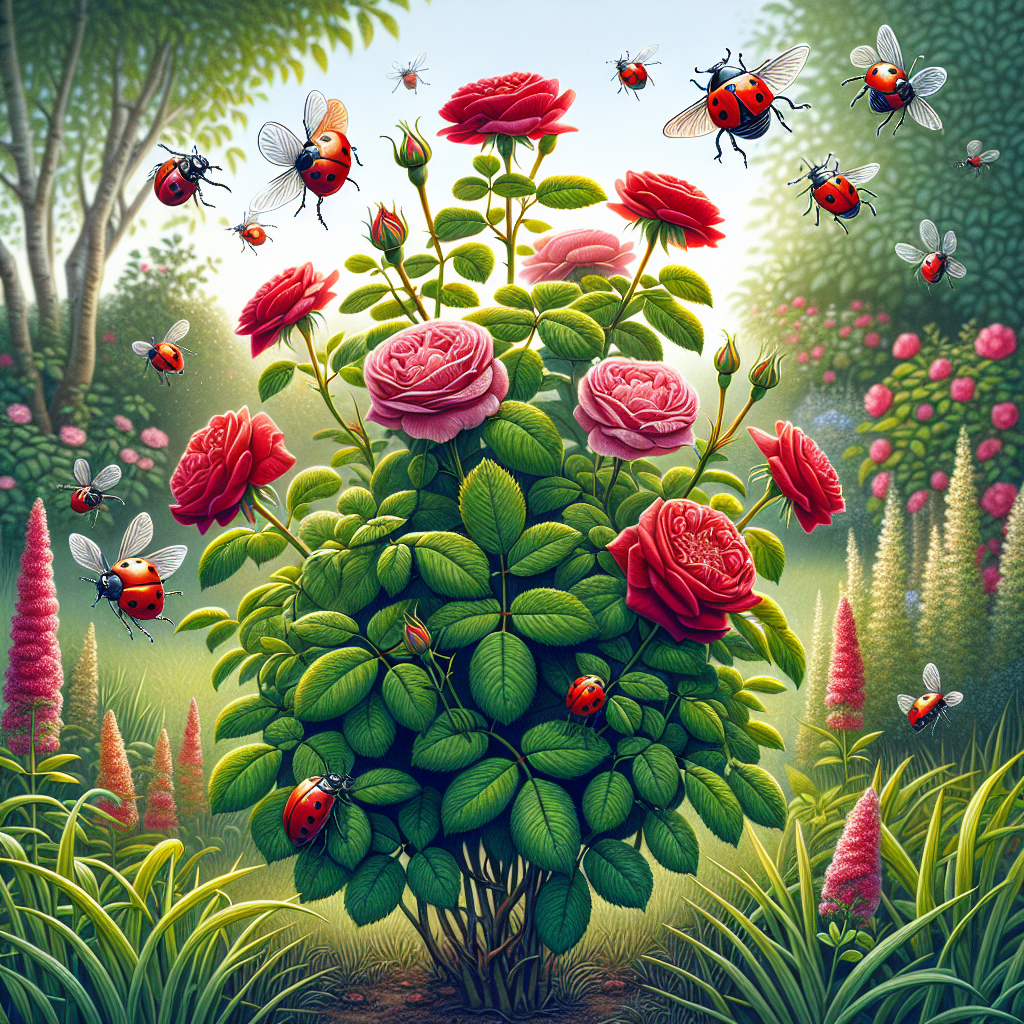How to Stop Birds from Eating Grass Seed
Published April 4, 2024 at 10:05 am
Learn effective strategies to protect your freshly sown grass seed from hungry birds, so you can ensure a lush, green lawn without unwelcome feathered feasters.

Understanding Bird Behavior and Grass Seed
When preparing to sow a fresh lawn, understanding the attraction birds have to your grass seed is crucial. Seeds provide these feathered friends with a rich source of nutrition, which explains their hard-to-resist appeal.
To combat this, creating a hospitable environment for birds while safeguarding your seeds is key. This balanced approach ensures a beautifully germinated lawn without robbing local wildlife of their sustenance.
Physical Barriers: Effective and Humane
Physical barriers rank among the most humane and effective methods to protect your grass seed from birds. A popular choice is the use of burlap sheets, easily secured over the seeded area with garden staples or weights.
Not only do they shield against birds, but they also maintain soil moisture and temperature, both essential for successful seed germination. Once the seeds start to sprout and embed their roots, the burlap can be removed, and your grass can grow undisturbed by our avian cohabitants.
Netting and Floating Row Covers
Garden netting or floating row covers can also offer a safe haven for your seeds. These lightweight fabrics come in various mesh sizes, tailored to let plenty of sunlight and water through, while keeping hungry birds at bay.
It’s vital to maintain a small gap between the soil and the netting. This space prevents birds from making direct contact with the seeds yet allows tender shoots to grow through without impedance.
Visual and Auditory Deterrents
Birds are instinctively wary of potential threats, and replicating these signals can discourage them from landing in your seeded areas. Reflective objects like old CDs, metallic streamers, or special bird deterrent tapes flutter and shine in the breeze, creating an off-putting environment for birds.
Auditory scare tactics like wind chimes or ultrasonic bird repellents emit sounds that are disturbing to birds but often unnoticeable to humans. These can be strategically placed around your garden for added protection against feathered invaders.
Natural and Safe Repellents
Natural repellents like predator urine granules simulate the presence of common bird predators. When sprinkled around the area, they send a powerful message to birds that danger may be lurking nearby.
Ingredient-conscious gardeners appreciate these repellents, as they are non-toxic and won’t harm the ecosystem of your yard. Plus, they can serve a dual purpose, potentially fending off other wildlife that might show interest in your fresh seeds.
Choosing the Right Seed
Another consideration is selecting grass seed coated with bird-deterrent substances. Coated seeds are usually sticky and infused with a mild aversive agent, making them less palatable for birds.
These seeds are widely available and typically boast a higher germination rate, as the coating also includes essential nutrients. Plus, the added protection against birds means more seeds remain in your soil to sprout into a lush lawn.
Gardening Tips for Success
To truly fortify your grass seeds, consider integrating companion planting. Certain plants can either distract birds by providing an alternative food source or deter them with their scent.
By planting a peripheral barrier of such plants, you’re not only diversifying your garden’s ecosystem but also creating an additional layer of protection for your grass seed. Research indicates that this is a sustainable and ecologically-friendly approach actively backed by expert gardeners.
Seed Mixes and Mulch
Intentionally blending your grass seed with soil and mulch, making a homemade seed-starting mix, can camouflage your seeds from birds. Blending hides the seeds from their sight – and mind – while providing the necessary coverage for moisture retention.
Adequate mulching after seeding also contributes to discouraging birds. Natural mulches like straw contain no seeds, making them perfect for this purpose. Remember to apply a thin layer; too much can impede growth.
Fake Predators for Real Results
Deploy fake predators like plastic owls or snakes around your seeded area. These decoys play on the birds’ natural fear of predators, deterring them from coming close to your precious seedlings.
For best results, move these decoys around frequently. Birds are smart, and they’ll soon realize stationary “predators” pose no real threat. A change in placement not only keeps birds guessing but also enhances the prolonged effectiveness of these guardians.
Innovative Garden Gadgets
Advancements in gardening technology have led to the creation of innovative gadgets. Solar-powered rotating rods or motion-activated water sprinklers add a surprise element that startles birds away from your lawn area.
While initially more costly, these gadgets are a one-time investment that can provide lasting peace of mind. They often come with adjustable sensitivity settings, allowing you to customize their operation according to your specific garden needs.
Product Highlight: Bird Netting and Deterrent Tapes
One of the highly recommended products for guarding against feasting birds is the Dalen Gardeneer Bird-X Protective Netting. This lightweight netting stands up to sun exposure and is easy to drape over your newly seeded lawn, forming an effective barrier.
Moreover, De-Bird Reflective Scare Tape doubles as a visual deterrent while also making a slight noise in the wind, which birds find disconcerting. It’s a simple, non-toxic option that can be replaced and reused season after season.
Pros
- Dalen Gardeneer Bird-X is durable and UV-resistant
- De-Bird Tape is highly reflective and easy to install
Cons
- Bird-X may require additional securing in windy areas
- Scare Tape effectiveness may diminish over time and require replacement
Find This and More on Amazon
Integrating Edible Plants for Distraction
If your garden space allows, consider integrating edible plants known to attract birds. Plants like sunflowers and berry bushes can provide an alternative food source, distracting them from the grass seed.
Incorporating these into your garden not only adds beauty and variety but also plays a pivotal role in creating a balanced ecosystem where both your lawn and local wildlife can thrive harmoniously.
Cover Crops: A Natural and Nutritious Alternative
Using cover crops like clover or alfalfa is an excellent strategy for those areas of your garden where grass isn’t the primary focus. These plants occupy the birds’ attention, are nitrogen-fixing, and improve soil health—ultimately benefiting any nearby grass areas with better soil conditions.
It’s an approach that works hand-in-hand with nature, rather than against it, ensuring a thriving garden that’s both productive and resistant to bird damage.
Community Efforts and Neighbourhood Harmony
Finally, it’s worth considering engaging with your community for bird-friendly initiatives. Establishing local feeding stations at safe distances from seeded areas can direct birds away, streamlining their food source to specific, non-disruptive areas.
This cooperative strategy fosters neighbourhood harmony, ensuring that everyone’s gardening efforts can flourish while supporting the local bird population in a coordinated and friendly manner.
Timing Is Everything: Seed at the Right Time
Timing your seed sowing can significantly influence bird activity. Early morning or late evening, when birds are less active, could be the perfect window for laying down seeds undisturbed.
Paying attention to the natural patterns of wildlife and adjusting your gardening schedule accordingly can make all the difference in achieving a bird-free, well-germinated lawn.
Using Soil Toppers for Camouflage
Consider adding a thin layer of compost or topsoil on top of your freshly sown seeds. This technique masks the grass seeds and makes it a bit more challenging for birds to spot their next meal.
The added benefit of this practice is that it can also enhance the soil’s fertility, giving your grass seeds a better environment to sprout and grow strong, which means you’ll likely end up with a healthier lawn.
Water Management Techniques
Proper watering routines can play a role in keeping birds at bay. Watering your lawn right after seeding helps the seeds to settle into the soil, reducing their visibility.
Furthermore, a well-watered lawn might draw in worms and bugs from the soil, which could potentially distract birds from the seeds as they indulge in a protein-rich alternative.
Distraction Feeding
Setting up a bird feeder filled with seeds specifically for your feathered friends might seem counterintuitive, but it can actually lure them away from your freshly seeded lawn.
Placed strategically at the far end of your property, a bird feeder can become a hotspot for birds, granting your grass seeds the peace they need to germinate without interference.
Seed Alternatives: Hydroseeding
Hydroseeding is a modern technique that mixes grass seed, mulch, fertilizer, and water in a slurry that’s sprayed over the soil. This method adheres the seeds to the ground and provides an immediate protective layer, making it more difficult for birds to access the seeds.
Though it’s an investment, hydroseeding is known to promote quick germination and could be a great way to establish a new lawn without bird-related worries.
Engaging in Lawn Aeration
Aerating your lawn before seeding can aid in more seeds directly settling into the soil, reducing their exposure on the surface where birds can easily find them.
Lawn aeration involves creating small holes in the soil, allowing air, water, and nutrients to penetrate the grass roots, leading to a more robust lawn that can better compete with birds for those precious seeds.
Creating Habitat for Birds
Creating a habitat specifically for birds can provide them with a multitude of resources, thus reducing their interest in your new grass seed. Consider including bird baths, shelters, and native plants that offer nectar, berries, or nuts.
By giving birds their desired locale, you’re appealing to their basic needs, inadvertently steering them away from the freshly sown seeds and simultaneously promoting biodiversity in your garden.
Gentle Lawn Alteration: No-Till Methods
Adopting a no-till approach when planting grass seed means you’re avoiding disturbing the soil as much as possible. This method preserves soil structure, which is beneficial for seed germination and less attractive for birds, as seeds are not openly displayed on the surface.
Although this process requires careful planning and can be slower than traditional seeding, it’s a mild yet effective way to sew your lawn and maintain a natural soil ecosystem.
Product Highlight: Ultrasonic Bird Repellers
Turning to modern solutions, the Bird-X Yard Gard Electronic Animal Repeller is a commonly cited product. Ultrasonic repellers can emit sounds at frequencies undetectable to most humans but annoying to birds, effectively keeping them away from your seeded areas.
Since it’s solar-powered and motion-activated, this device offers continuous protection without the need for constant monitoring or adjustments.
Pros
- Bird-X Yard Gard is eco-friendly and solar-powered
- Efficient ultrasonic frequencies work well to deter birds
Cons
- Ultrasonic repellers may not impact all bird species
- Some humans or pets could possibly hear the frequencies
Find This and More on Amazon
Maintaining a Clean Yard
Ensuring your yard is free from food waste or existing seeds is fundamental in not attracting unwanted birds. Keeping a tidy and debris-free lawn will signal that there’s nothing of interest for them to feast on.
This cleanliness can also pertain to pet food or accessible compost which birds may find tempting. Regular maintenance of these areas will keep birds focusing on the wild for their sustenance and not your property.
Product Highlight: Bird Repellent Gels
Non-toxic bird repellent gels, like the popular Bird-Proof Gel from Bird-X, are another ingenious way to deter birds. These gels can be applied to various surfaces and provide an uncomfortable but harmless barrier that birds will avoid.
It’s important to reapply the gel periodically to maintain its effectiveness, especially after heavy rain or in extreme weather conditions.
Pros
- Bird-X Bird-Proof Gel is discreet and non-toxic
- Applicable to various surfaces around the yard
Cons
- Regular reapplication is necessary for ongoing effectiveness
- Gel may wash away quickly in rain-heavy climates
Find This and More on Amazon
Experiential Deterrence: Wind Spinners and Pinwheels
Wind spinners and pinwheels offer an interactive and playful way to protect your seeds. Their movement in the wind creates a visual distraction that can deter birds, and they add a whimsical touch to any garden.
They are particularly effective when combined with other deterrents, and they can be found in a variety of colors and designs to suit any garden aesthetic.
Seed Sowing Technique: Broadcast vs. Row Planting
Switching up your seed sowing technique can have an impact on how enticing your seeds are to birds. Instead of broadcasting seeds over a large area, consider row planting with a layer of soil or mulch to cover the seeds and keep them hidden.
This targeted approach can minimize the amount of seed exposed and also fosters a well-organized lawn, which can be more manageable over time.
Consistent Lawn Care and Bird Deterrence
A well-maintained lawn can itself be a deterrent to birds looking for seeds. Ensuring that your lawn is regularly mowed and the thatch layer is kept under control makes it less appealing for birds to rummage through the grass.
Coupled with diligent watering and fertilization, the formidable growth of the grass makes your lawn less of a picnic ground and more of an impenetrable forest from a bird’s perspective.
Beneficial Insects and Soil Health
Fostering an environment for beneficial insects not only helps your lawn thrive but can also serve as a distraction for birds. Predatory insects can reduce the pest population, while providing birds with an alternative food source to your grass seed.
Healthy soil teeming with beneficial microbes and earthworms will also improve the growth rate and vigor of your grass, further discouraging birds from causing havoc.
Strategic Seeding with Companions
Mixing grass seed with soil amendments or companion grass varieties can create a dynamic lawn that’s both aesthetically pleasing and less attractive to birds. This strategy utilizes the natural tendency of certain plants to repel pests or dominate the landscape, providing your desired grass species with a protective entourage.
For example, adding clover to your seed mix can help in fixing nitrogen in the soil, thereby offering a more robust lawn while keeping birds focused elsewhere due to the clover’s quick-sprouting nature.
Understanding Your Local Bird Species
Gaining knowledge about the specific types of birds in your area can be a game-changer. Different birds have varying diets and habits, so tailoring your deterrent methods to the species present can increase the effectiveness of your efforts.
Some birds may be more attracted to certain colors or textures, while others may have a strong dislike for certain materials used in bird deterrents. Adjust your tactics based on the local avian fauna for the best results.
Deterrence Through Environmental Adjustment
Manipulating the habitat around your lawn can alter the environmental cues that birds rely on. Tall trees or shrubs can provide cover for birds, so trimming them back can reduce the appeal of your yard as a foraging ground.
Conversely, planting certain types of flora will not only beautify your surroundings but also provide birds with food sources and nesting materials, drawing their focus away from your seeded lawn.
Education and Community Awareness
Sharing your knowledge and strategies with neighbors can lead to comprehensive area-wide bird deterrence. Engaging in community forums or local gardening groups to educate others about non-toxic, bird-friendly lawn care techniques not only aids your lawn but also benefits the wider environment.
This collective effort can ensure consistency across the neighborhood, providing a unified front against the common problem of birds eating grass seed, and fostering a spirit of cooperation and shared success.
Identifying Underlying Causes
Sometimes, excessive interest from birds can be indicative of underlying lawn issues such as pest infestations or poor soil quality. By addressing these root problems, you can naturally decrease the attractiveness of your lawn to birds.
Healthy, pest-free grass often requires less intervention to protect from birds, as the ecosystem is in better balance and birds have fewer reasons to disturb the soil and seed.
Staying Informed and Adaptable
The challenge of keeping birds from eating your grass seed is ongoing, and new solutions and products are constantly being developed. Staying informed about the latest advances in lawn care and bird deterrent techniques can help you stay one step ahead.
Moreover, be adaptable. Sometimes, what worked one season may not be as effective the next. Birds are intelligent and can become accustomed to deterrents, so being willing to try different approaches is key to long-term success.
Remembering the Wildlife Aspect
While protecting your grass seed is important, it is also crucial to remember the importance of wildlife in our ecosystems. Birds play a significant role in pest control and pollination and maintaining a balanced approach to bird deterrence is imperative.
Seeking solutions that do not harm birds but simply redirect them can foster a healthy coexistence between your lawn care ambitions and the native wildlife that share your outdoor space.
Final Thoughts on Grass Seed Protection
Protecting your grass seed from birds requires a blend of knowledge, strategy, and respect for the environment. By employing a variety of humane and effective techniques tailored to your specific situation, you can ensure a lush and healthy lawn without negatively impacting the local bird population.
Remember, consistency in your efforts coupled with a flexible mindset toward adapting new methods as needed will serve as the cornerstone towards a beautiful lawn and a harmonious garden ecosystem. Good luck!
Shop more on Amazon
Flowers & Plants Team
Flowers & Plants Team


